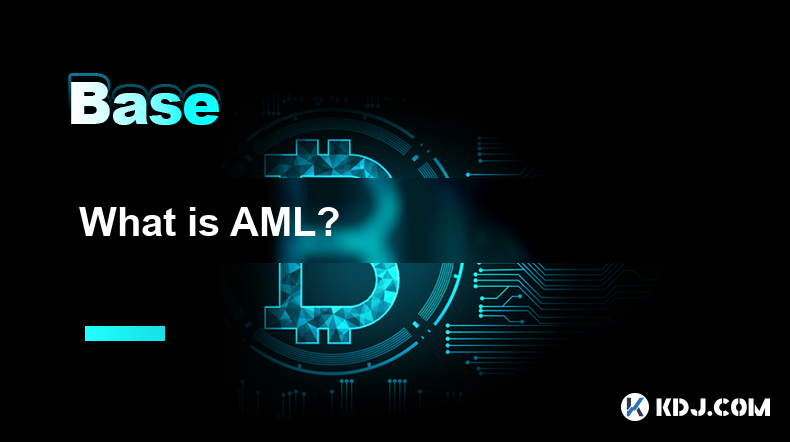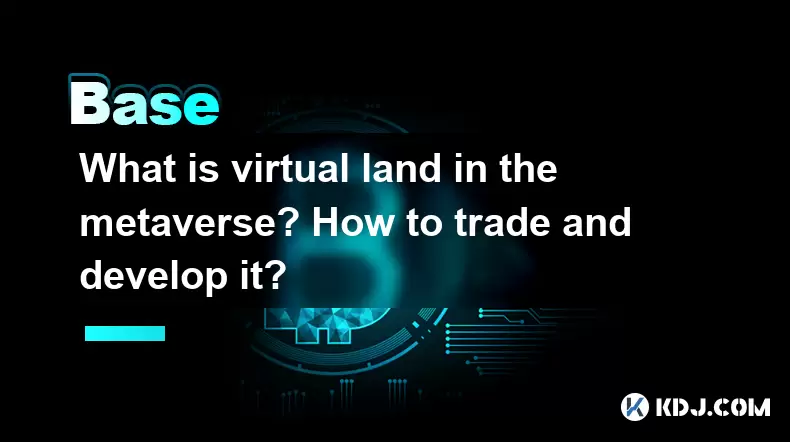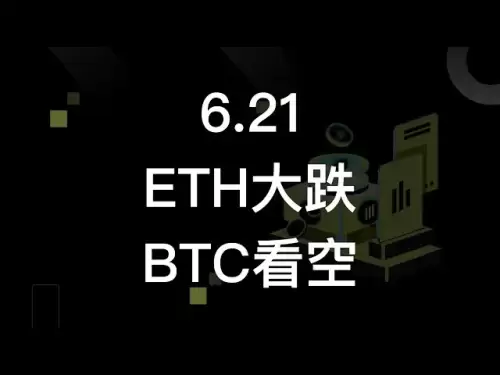-
 Bitcoin
Bitcoin $103,456.1111
0.49% -
 Ethereum
Ethereum $2,414.9631
0.02% -
 Tether USDt
Tether USDt $1.0006
0.05% -
 XRP
XRP $2.1083
0.24% -
 BNB
BNB $634.8760
-0.76% -
 Solana
Solana $139.8437
1.94% -
 USDC
USDC $0.9998
-0.01% -
 TRON
TRON $0.2737
0.97% -
 Dogecoin
Dogecoin $0.1602
0.20% -
 Cardano
Cardano $0.5737
1.08% -
 Hyperliquid
Hyperliquid $32.9779
-2.54% -
 Bitcoin Cash
Bitcoin Cash $474.8886
-1.80% -
 Sui
Sui $2.6272
-1.99% -
 Chainlink
Chainlink $12.4878
0.14% -
 UNUS SED LEO
UNUS SED LEO $8.9234
0.35% -
 Stellar
Stellar $0.2411
-0.18% -
 Avalanche
Avalanche $17.0274
-0.70% -
 Toncoin
Toncoin $2.8936
-1.11% -
 Shiba Inu
Shiba Inu $0.0...01112
-0.58% -
 Litecoin
Litecoin $82.6982
1.33% -
 Hedera
Hedera $0.1423
-0.05% -
 Monero
Monero $314.8455
3.26% -
 Ethena USDe
Ethena USDe $1.0006
0.01% -
 Polkadot
Polkadot $3.4043
1.14% -
 Dai
Dai $0.9999
0.01% -
 Bitget Token
Bitget Token $4.2848
-0.13% -
 Uniswap
Uniswap $6.8748
-5.45% -
 Pepe
Pepe $0.0...09661
0.52% -
 Pi
Pi $0.5359
1.19% -
 Aave
Aave $242.9168
-1.03%
What is AML?
AML combats financial crime by tracing cryptocurrency transactions, employing blockchain analysis and KYC/AML procedures to identify suspicious activity; evolving regulations and industry collaboration are crucial for compliance.
Mar 18, 2025 at 09:06 pm

Key Points:
- AML stands for Anti-Money Laundering, a global effort to combat financial crimes.
- In the cryptocurrency space, AML compliance is crucial due to the anonymity afforded by blockchain technology.
- Various methods are used to trace cryptocurrency transactions and identify suspicious activities.
- Regulations and compliance measures are constantly evolving to address the challenges posed by cryptocurrencies.
- Understanding AML procedures is crucial for both cryptocurrency businesses and users.
What is AML?
AML, or Anti-Money Laundering, refers to a set of laws, regulations, and procedures designed to prevent criminals from disguising illegally obtained money as legitimate funds. This process involves tracing the flow of money to identify its origin and intended use. It's a global effort involving international cooperation to combat financial crimes, including drug trafficking, terrorism financing, and other illicit activities. The core principle is to disrupt the financial pathways used by criminals.
AML and Cryptocurrencies: A Unique Challenge
Cryptocurrencies, with their pseudonymous nature and decentralized structure, present unique challenges to traditional AML methods. Unlike traditional banking systems where transactions are easily traceable through centralized institutions, cryptocurrency transactions are recorded on public blockchains, offering a degree of anonymity. This opacity makes it harder to track the movement of funds and identify suspicious activities. However, this doesn't mean cryptocurrencies are inherently untraceable.
Tracing Cryptocurrency Transactions
Despite the challenges, various techniques are employed to trace cryptocurrency transactions and identify potential money laundering activities. These techniques include:
- Blockchain Analysis: Specialized software analyzes blockchain data to identify patterns and connections between transactions, potentially revealing the origin and destination of funds. This involves tracking transaction flows and identifying clusters of suspicious activity.
- Know Your Customer (KYC) and Anti-Money Laundering (AML) Procedures: Exchanges and other cryptocurrency businesses are increasingly required to implement KYC/AML procedures, requiring users to verify their identities before conducting transactions. This helps to link real-world identities to cryptocurrency addresses.
- Transaction Monitoring: Sophisticated algorithms monitor cryptocurrency transactions for suspicious patterns, such as unusually large transactions or transactions involving known high-risk entities. This often involves flagging transactions that deviate significantly from established norms.
- Collaboration with Law Enforcement: Cryptocurrency businesses often collaborate with law enforcement agencies to share information about suspicious activities and assist in investigations. This cooperation is crucial in disrupting criminal networks.
Evolving Regulations and Compliance Measures
The regulatory landscape surrounding cryptocurrencies and AML compliance is constantly evolving. Governments worldwide are grappling with how to regulate this new asset class while balancing innovation with the need to combat financial crime. This has led to the development of various regulations and compliance frameworks, which vary significantly across jurisdictions. The challenge lies in creating regulations that are effective without stifling innovation in the cryptocurrency space.
The Role of Cryptocurrency Businesses in AML Compliance
Cryptocurrency businesses, including exchanges, wallets, and other service providers, play a crucial role in AML compliance. They are often required to implement robust KYC/AML programs, including:
- Customer Due Diligence (CDD): This involves verifying the identity of customers and understanding their business activities. This is a fundamental aspect of ensuring compliance.
- Transaction Monitoring: Businesses must monitor transactions for suspicious activity, flagging anything that warrants further investigation. This is often achieved through automated systems.
- Suspicious Activity Reporting (SAR): When suspicious activity is identified, businesses are often required to report it to the relevant authorities. This is a critical part of AML compliance.
- Employee Training: Employees need to be trained on AML procedures and regulations to ensure consistent compliance. Regular updates are essential given the evolving regulatory landscape.
The User's Perspective on AML Compliance
While AML compliance is primarily the responsibility of businesses, cryptocurrency users also have a role to play. Understanding the risks associated with money laundering and adhering to KYC/AML procedures when using cryptocurrency exchanges and services is important. This includes providing accurate information and cooperating with verification processes.
AML and the Future of Cryptocurrencies
The future of AML compliance in the cryptocurrency space is likely to involve further technological advancements and regulatory developments. The use of blockchain analytics, artificial intelligence, and machine learning is expected to improve the efficiency and effectiveness of AML efforts. However, the balance between ensuring robust AML compliance and preserving the decentralized nature of cryptocurrencies remains a key challenge. The ongoing evolution of regulations and technologies will continue to shape the landscape of AML in the cryptocurrency industry.
Frequently Asked Questions:
Q: What happens if a cryptocurrency exchange fails to comply with AML regulations?
A: Consequences can vary depending on jurisdiction but may include hefty fines, license revocation, legal action, and reputational damage.
Q: Are all cryptocurrency transactions monitored for AML purposes?
A: No, not all transactions are actively monitored. Monitoring typically focuses on high-risk transactions and entities.
Q: How can I protect myself from being involved in money laundering through cryptocurrencies?
A: Use reputable exchanges, be cautious of unsolicited offers, and thoroughly understand the KYC/AML procedures before engaging in any transactions.
Q: What are the key differences between AML compliance in traditional finance and cryptocurrencies?
A: The key difference lies in the traceability of transactions. Traditional finance uses centralized systems, while cryptocurrencies rely on decentralized and pseudonymous technologies, making tracing more complex.
Q: Is it possible to completely anonymize cryptocurrency transactions?
A: While techniques like mixing services attempt to obscure the origin and destination of funds, advanced blockchain analysis can often still reveal the underlying transactions. Complete anonymity is extremely difficult, if not impossible, to achieve.
Disclaimer:info@kdj.com
The information provided is not trading advice. kdj.com does not assume any responsibility for any investments made based on the information provided in this article. Cryptocurrencies are highly volatile and it is highly recommended that you invest with caution after thorough research!
If you believe that the content used on this website infringes your copyright, please contact us immediately (info@kdj.com) and we will delete it promptly.
- JasmyCoin's Price Drop: Hitting Major Levels – Is Another Dump Coming?
- 2025-06-22 00:25:12
- XRP, ETFs, and Bitcoin: A New York Minute on Crypto's Wild Ride
- 2025-06-22 01:05:12
- BNB Price, Maxwell Fork, and Market Uncertainty: Navigating the Crypto Landscape
- 2025-06-22 01:25:12
- Violet Ray Caramella: A Life of Light, Love, and Legacy
- 2025-06-22 00:25:12
- ARK Invest, Circle, and Stablecoins: Riding the Wave or Bailing Out?
- 2025-06-22 00:45:11
- Ethereum, Coinbase, and Whale Alerts: Decoding the Crypto Shuffle
- 2025-06-22 01:25:12
Related knowledge

What is an oracle in blockchain? How to ensure data authenticity?
Jun 19,2025 at 08:49pm
Understanding the Role of an Oracle in BlockchainIn the context of blockchain technology, an oracle serves as a bridge between the blockchain and external data sources. While blockchains are inherently secure and decentralized, they cannot access real-world information on their own. Oracles enable smart contracts to interact with off-chain data such as ...

What is the core concept of Web3.0? How is it different from Web2.0?
Jun 21,2025 at 05:56pm
Decentralization as the Foundation of Web3.0The core concept of Web3.0 revolves around decentralization, which fundamentally challenges the centralized architecture of Web2.0. In Web3.0, control and ownership are distributed across a network rather than being held by a central authority or corporation. This is achieved primarily through blockchain techn...

What is blockchain gaming (GameFi)? How to make money while playing?
Jun 20,2025 at 07:56am
Understanding Blockchain Gaming (GameFi)Blockchain gaming, often referred to as GameFi, is a fusion of blockchain technology and video games. It enables players to own in-game assets through non-fungible tokens (NFTs) and earn rewards via cryptocurrencies or token-based systems. Unlike traditional games where items are controlled by centralized develope...

What is zero-knowledge proof in blockchain? How to protect privacy?
Jun 20,2025 at 06:28am
Understanding Zero-Knowledge Proof in BlockchainZero-knowledge proof (ZKP) is a cryptographic method that allows one party to prove to another that they know a value or piece of information without revealing the actual data. In the context of blockchain, this concept plays a crucial role in enhancing privacy and security while maintaining the integrity ...

What is virtual land in the metaverse? How to trade and develop it?
Jun 20,2025 at 02:35am
Understanding Virtual Land in the MetaverseVirtual land in the metaverse refers to a digital space or plot of land within a virtual world, often represented as NFTs (non-fungible tokens) on blockchain platforms. These digital properties can be bought, sold, and developed by users, much like real estate in the physical world. Platforms such as Decentrala...

What is blockchain cross-chain technology? What problems does it solve?
Jun 20,2025 at 10:28am
Understanding the Basics of Blockchain Cross-Chain TechnologyBlockchain cross-chain technology refers to a set of protocols and systems that enable interoperability between different blockchain networks. In simpler terms, it allows for the transfer of assets or data across multiple blockchains that would otherwise operate in isolation from one another. ...

What is an oracle in blockchain? How to ensure data authenticity?
Jun 19,2025 at 08:49pm
Understanding the Role of an Oracle in BlockchainIn the context of blockchain technology, an oracle serves as a bridge between the blockchain and external data sources. While blockchains are inherently secure and decentralized, they cannot access real-world information on their own. Oracles enable smart contracts to interact with off-chain data such as ...

What is the core concept of Web3.0? How is it different from Web2.0?
Jun 21,2025 at 05:56pm
Decentralization as the Foundation of Web3.0The core concept of Web3.0 revolves around decentralization, which fundamentally challenges the centralized architecture of Web2.0. In Web3.0, control and ownership are distributed across a network rather than being held by a central authority or corporation. This is achieved primarily through blockchain techn...

What is blockchain gaming (GameFi)? How to make money while playing?
Jun 20,2025 at 07:56am
Understanding Blockchain Gaming (GameFi)Blockchain gaming, often referred to as GameFi, is a fusion of blockchain technology and video games. It enables players to own in-game assets through non-fungible tokens (NFTs) and earn rewards via cryptocurrencies or token-based systems. Unlike traditional games where items are controlled by centralized develope...

What is zero-knowledge proof in blockchain? How to protect privacy?
Jun 20,2025 at 06:28am
Understanding Zero-Knowledge Proof in BlockchainZero-knowledge proof (ZKP) is a cryptographic method that allows one party to prove to another that they know a value or piece of information without revealing the actual data. In the context of blockchain, this concept plays a crucial role in enhancing privacy and security while maintaining the integrity ...

What is virtual land in the metaverse? How to trade and develop it?
Jun 20,2025 at 02:35am
Understanding Virtual Land in the MetaverseVirtual land in the metaverse refers to a digital space or plot of land within a virtual world, often represented as NFTs (non-fungible tokens) on blockchain platforms. These digital properties can be bought, sold, and developed by users, much like real estate in the physical world. Platforms such as Decentrala...

What is blockchain cross-chain technology? What problems does it solve?
Jun 20,2025 at 10:28am
Understanding the Basics of Blockchain Cross-Chain TechnologyBlockchain cross-chain technology refers to a set of protocols and systems that enable interoperability between different blockchain networks. In simpler terms, it allows for the transfer of assets or data across multiple blockchains that would otherwise operate in isolation from one another. ...
See all articles

























































































